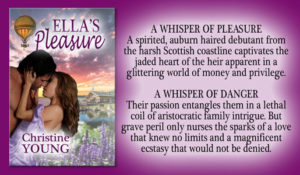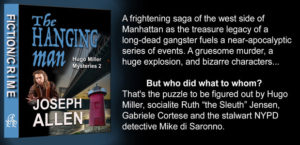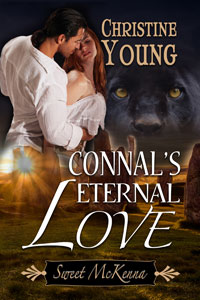The Hanging Man #Thriller #Suspense
The Hanging Man: Bizarre characters, a gruesome murder, a huge explosion that destroys part of a block– a historical gangster who buried gold treasure under a building.
The Hanging Man: Thriller/Suspense
Buy at: Amazon, Barnes and Noble
BLURB: The Hanging Man
When wealthy investment banker Luigi’s body is found hanging from the crossbars of the George Washington Bridge, it is immediately thought to be a Mafia hit. Is it? Not according to a Catholic bishop with a diplomatic errand from the Vatican and an out-of-control Twitter account. As the truth unfolds, the reader meets a mad dwarf who eats insects and small rodents, a long-dead candidate for canonization, a deceased gangster who owned The Cotton Club in Harlem, and a tribe of mis-shapen males whose lives have been spent in tunnels under Hell’s Kitchen.
Explosions, whispers coming from walls, mysterious billionaires from Grand Cayman, Luigi’s terrified young wife with a suckling baby at her breast, treasure-hunters looking for buried gold in the basement – provide a frightening backdrop to a mystery that literally goes deeper and deeper into Manhattan as the story develops.
Hugo Miller, Ruth the Sleuth, handsome Gabriele Cortese and stalwart NYPD detective Mike di Saronno pool their considerable resources to solve a series of crimes that may hark back as far as seventy-five or one hundred years.
EXCERPT: The Hanging Man
So, there we were, starting out from my place at 48th Street and 8th Avenue at about one o’clock, heading for the GW Bridge on bicycles. It was Sunday and it was September, and it was still drippy summer humid, so we took bottled water in the saddlebags. Dehydration is not part of my plan for myself. It being hot, the population on the bike trail was not as heavy as it would be in better weather. On weekends in hot weather, by the way, the great and the good are not in town—they’re still out east (in the Hamptons), or down the shore (the beachfront towns in New Jersey), or maybe at some lake upstate if they can’t afford either of the first two places. Still, there were rollerbladers, runners, sweaty walkers, and helmeted bikers like Gabriele and me. We dismounted at the Boat Basin at 79th Street and polished off a full bottle of Poland Spring water each then refilled the bottles from a water fountain next to the restaurant there. Then we were back at it, pedaling and staring at the people on parade.
Gabriele wanted to stop at Riverbank State Park, which is a place that could only happen in New York. It’s a real park, like thirty acres of real park, built on top of, literally on top of, a sewage treatment plant. No, it doesn’t smell bad. The bridge was looming in front of us, but I still couldn’t see the little red lighthouse. There is actually a kids’ book called The Little Red Lighthouse. I saw one in a used bookstore one time and actually that is what caused me to look it up in Wikipedia and decide it was being added to my bucket list. There is actually a Little Red Lighthouse swim every year, but the thought of submerging myself in the Hudson River with God knows what kind of vermin or ancient industrial toxins is far too grim to consider.
I kept thinking we would see the lighthouse, but it is really obscured by the trees, and as you get closer, it is hidden on the river side of the huge aluminum-colored erector-set pylons that hold the bridge up. Originally, the bridge was to have looked more like the Brooklyn Bridge, with the metal skeleton covered by stone or cement. They never got around to doing the all-clad chiseled stone exterior during the Depression because it was too expensive. But the distinctive girders filled with x-shaped struts have been admired over the decades by artists and architects almost universally. One famous French architect said it was the most beautiful bridge in the world, and that was while he was designing the General Assembly building at the United Nations. Finally, there was a branch of the bike path to the left and the little red lighthouse was there in front of us, where the main path continued on north.
We walked up the cast-iron staircase inside the lighthouse to the lantern, which has been restored as a lighthouse, even though its light is ridiculously overwhelmed by the millions of lights on the bridge that towers over it. Needless to say, the lighthouse predated the bridge by more than forty years, so there was a navigational purpose to it when it was built. We admired it then walked over toward the base of the bridge to see how the structure was raised, that is the busiest vehicle bridge in the world.
Italians are very much into beautiful things, and Gabriele is no exception. He was very taken by the bridge itself, from the completely unaccustomed angle and viewpoint we had. The gigantism of the bridge is more evident from beneath it than it is driving across it. Like the Great Pyramid at Giza, the simplicity of its shape makes it look smaller than it is in real life. The bridge is basically what has been called an inverted arch where the suspension cables are the defining aspect of its appearance. He was busily taking photo after photo on his smartphone, looking across the river toward the stunning vista of the Palisades on the New Jersey side of the river.
I walked over to the pylons to look up and started taking some cellphone photos myself. I have to admit that my distance vision, even with my glasses on, is not 20-20, especially when the lighting is not great, but as I looked up, I saw what I thought must have been a big bird’s nest in a corner up about 60 or 70 feet. The sun was in front of me as I looked up, and it obscured the nest, which I thought must be the abode of bald eagles, because there are certainly bald eagles all over and their whole diet is fish. If you drive along the Hudson River on a cold winter day, you can see the bald eagles sitting on ice floes waiting for a foolish fish to be visible—and then they dive straight into the water and come up with a meal. I was determined to get a picture.
Then it moved. Or swayed. I thought maybe I was getting dizzy, and looked down, put my hand out to a tree to steady myself. When I looked back up, the nest was quite different looking from what I had thought before. The sunlight was very dazzling, almost blinding me so I couldn’t make out anything for sure. I walked back over to the water’s edge and grabbed Gabriele’s arm.
“Come over here,” I said. “There’s something I can’t really see very well, and I want to know what it is.”
I pointed up inside the pylon and said, “I thought there was an eagle’s nest up there, but now I don’t think that’s what it is. Can you see what I’m pointing at?”
He nodded and took out a pair of dark sunglasses from his backpack and put them on. “There are two large black birds. No, maybe three.”
“Black? Are you sure? They must be crows. That’s disappointing, I was hoping they were eagles.”
“I can’t tell what they’re doing, but they’re flapping their wings like they are trying to hold onto something,” he said.
Just as he said that, the birds let go of what they were holding onto and flew up to a girder. What they were sitting on was a black lump that was actually swaying like a streetlight in a high wind.
Then without warning it started to fall, and as it fell we could both see that it was not a nest, but something with a black piece of cloth waving as it fell. As it fell, we both knew what it was. It was a body, a human body, and it had been hanging from a rope. It hit the ground with a squishy thud. Gabriele stared at it; I ran over to the lighthouse and interrupted a uniformed woman who obviously worked there.
“I’m sorry, miss, officer,” I said. “There’s an emergency over here.” I ran ahead of her to where Gabriele was standing and as I ran up to him, he turned and vomited all over the ground. When the body hit the ground, the birds returned and started to eat again. It was also immediately obvious why the body had fallen—the head had become detached from the body and had landed a few feet away. There was a ferocious smell.
I thought the woman was going to faint, but she didn’t. She called in an alarm to someone, and there were sirens almost immediately.
Gabriele, who has the darker skin of a Mediterranean, was as pale as a sheet. I walked him down the slight incline toward the lighthouse and sat him on a bench. I pushed his legs up so that the knees were bent in front of him.
“Put your head between your knees,” I said in as authoritative a voice as I could summon while feeling fairly sure I was going to be sick myself. We had moved away from the sight and smell of the cadaver and the birds, and there were firemen in full regalia, and paramedics running by us toward the pylon. I sank down on the bench next to Gabriele and put my arm around his shoulder. I was still wearing my backpack and I reached inside and pulled out a fresh bottle of water, opened it, and handed it to him.
“Just a little. Don’t drink much. It’ll make you sick.”
He sat up, sweaty but with his color returning. His hand shook as he lifted the bottle to his mouth.
“The Bridge is the most common location for suicide anywhere in the whole region,” I said. “Although most people jump off into the river. Hanging yourself seems like a much worse way to die than just smacking into the water.”
He looked at me quizzically. “Nobody would kill himself like that,” he said.
There was a used-car lot melee of yellow crime scene tape being strung from every vertical to every other vertical, and two plain-clothes detectives arrived within minutes. One stopped and said, “You found the body?”
We nodded.
“Stay here,” he said. “I’ll be right back.”
I did not feel faint, but I had the inevitable reaction after a tidal wave of adrenalin had rushed through my body: too weak to stand up, or to hold my head erect on my neck. I looked down at my legs, at the black-and-yellow bike pants and the cross-trainer shoes I chose to wear instead of bike shoes. I could feel myself shaking, especially my head and my jaw.
The detective came back. “OK if I ask you some questions?”
We told him the whole thing. How I thought it was eagles but couldn’t see over the glare from the sunlight. The birds scattering, the fall. “I guess you saw how it all landed,” I said. “Did he kill himself?”
“No way to tell. The M.E. will have to rule on that. Can you tell me how you happened to be here today?”
I told him that we came to see the lighthouse, rode our bikes. Gabriele said nothing, just stared at the ground between his feet. The detective asked to see identification. He took photos of the two driver’s licenses with his cellphone, thanked us and handed each of us his card. Then he turned to walk off toward the pylon.




